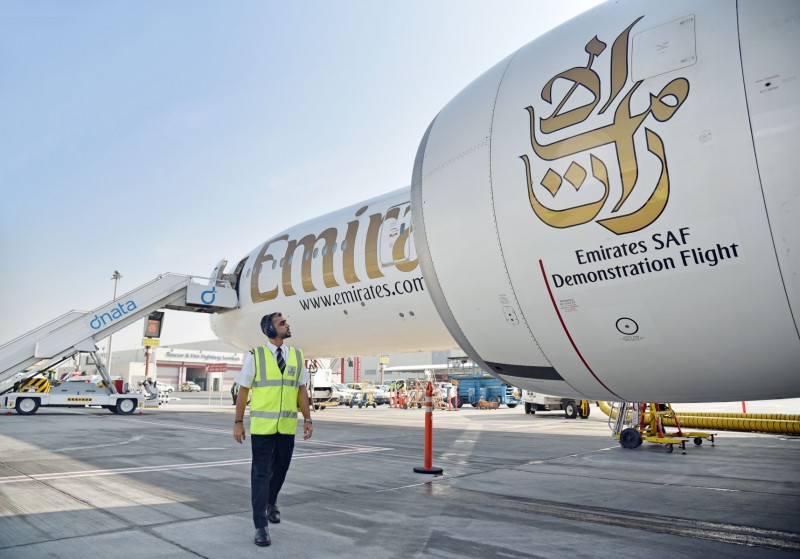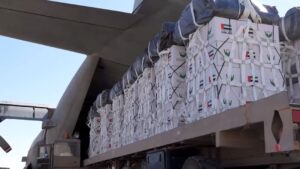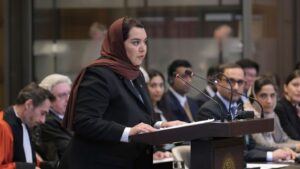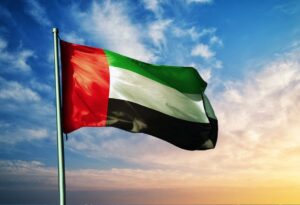Emirates operates milestone demonstration flight
Emirates operates milestone demonstration flight powered with 100% Sustainable Aviation Fuel

Karachi, The Gulf Observer: Emirates has operated its first milestone demonstration flight on a Boeing 777-300ER, powering one of its engines with 100% Sustainable Aviation Fuel (SAF). The flight took off from Dubai International Airport (DXB), and was commanded by Captain Fali Vajifdar and Captain Khalid Nasser Akram, flying for more than one hour over the Dubai coastline.
The demonstration flight powered by SAF holds particular significance as the UAE declares 2023 the ‘Year of Sustainability’. The year will showcase the UAE’s commitment to seek innovative solutions to challenges such as energy, climate change and other issues related to sustainability. The flight supports collective industry efforts to enable a future of 100% SAF flying and help advance the UAE’s sustainability objectives.
Conducted in partnership with GE Aerospace, Boeing, Honeywell, Neste and Virent First demonstration flight in Middle East and North Africa to be powered by 100% SAF in one of two engines
Emirates’ demonstration flight, the first in the Middle East and North Africa to be powered by 100% SAF, supports broader efforts to reduce lifecycle CO2 emissions as the industry looks to scale up its use of SAF. The flights will also help to refine the playbook for future SAF demonstrations, and will also support future certification where 100% drop-in SAF fuel is approved for aircraft. Currently, SAF is approved for use in all aircraft, but only in blends of up to 50% with conventional jet fuel.
Emirates worked alongside partners GE Aerospace, Boeing, Honeywell, Neste and Virent to procure and develop a blend of SAF that closely replicates the properties of conventional jet fuel. At each blend ratio, a host of chemical and physical fuel property measurements were carried out. After multiple lab tests and rigorous trials, they arrived at a blending ratio that mirrored the qualities of jet fuel. Eighteen tonnes of SAF were blended, comprised of HEFA-SPK provided by Neste (hydro processed esters and fatty acids and synthetic paraffinic kerosene) and HDO-SAK from Virent (hydro deoxygenated synthetic aromatic kerosene). The 100% SAF supplied one GE90 engine, with conventional jet fuel supplying the other engine.
The test flight further demonstrates the compatibility of the specially blended SAF as a safe and reliable fuel source. The promising outcome of this initiative also adds to the body of industry data and research around SAF blends in higher proportions, paving the way for standardization and future approval of 100% drop-in SAF as a replacement for jet fuel, well above the current 50% blend limit.


